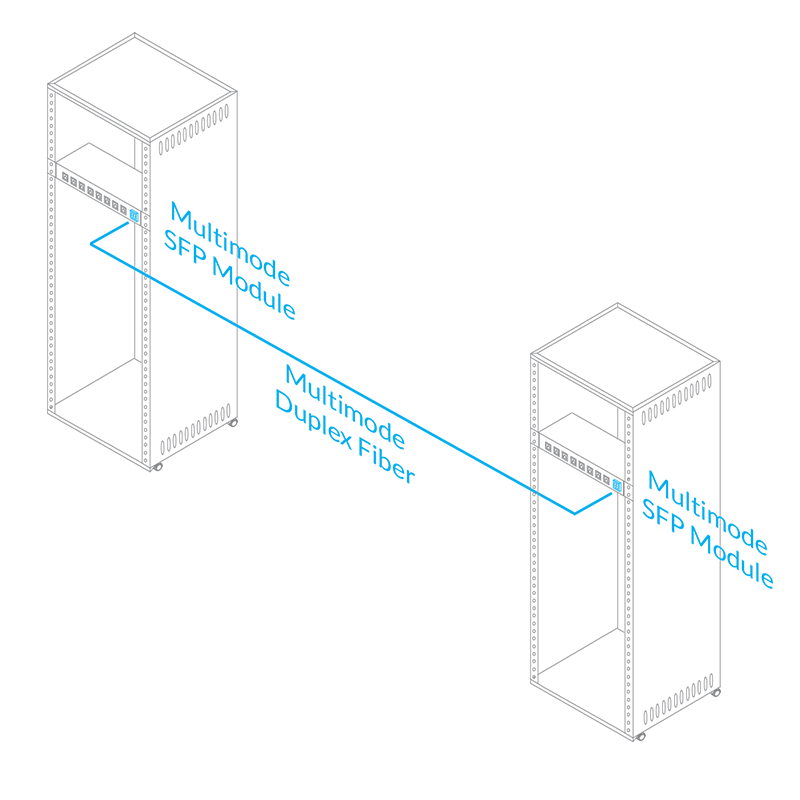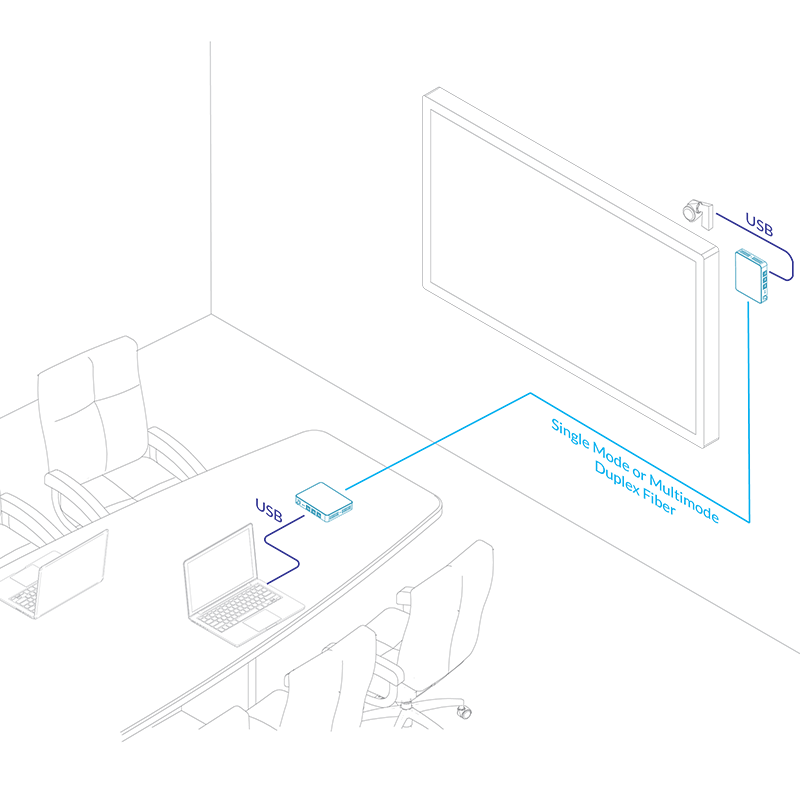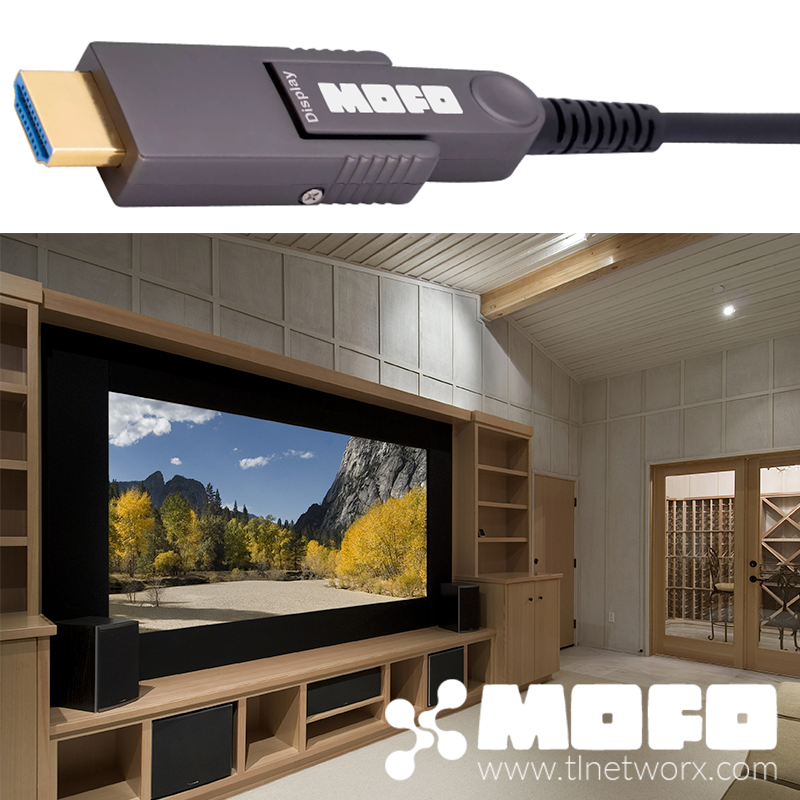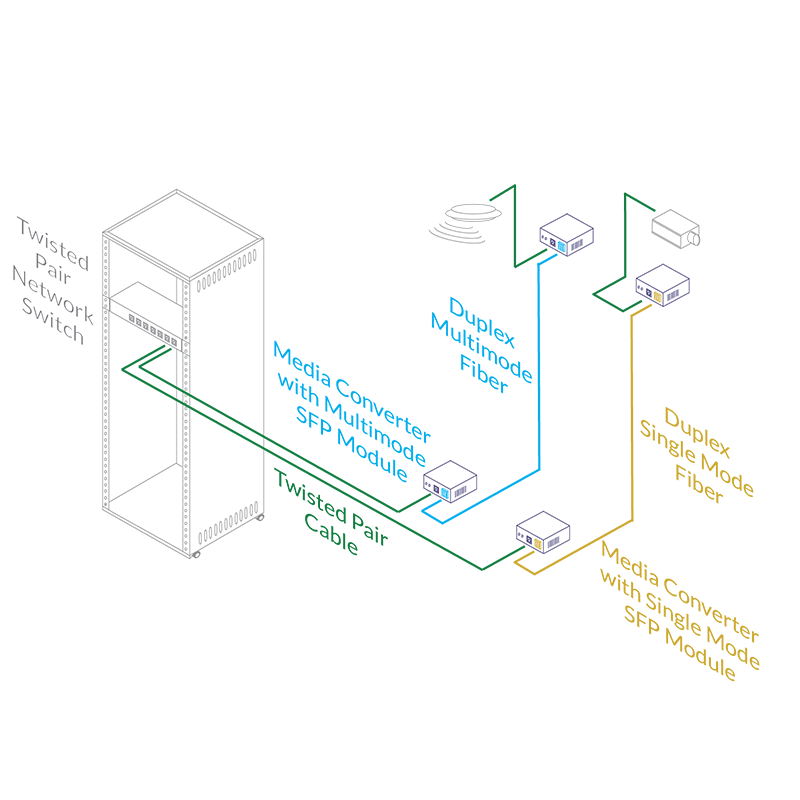Application Guide: Connecting Fiber-ready Network Switches

Fiber optic cabling is increasingly used to connect network switches and other datacom equipment, especially in long-distance and mission-critical applications. Fiber provides:
- Reliable signal transmission due to immunity from RF interference, electrical interference, static electricity, power surges and lightning strikes;
- Signal transmission distances over 100m / 330ft;
- Extremely Fast data speeds thanks to the simultaneous transmission and receipt of signals; and
- Increased internet signal bandwidth.
Most modern fiber-enabled network switches require an SFP transceiver module featuring a duplex (two strand) multimode OM3 or duplex single mode OS2 connection with LC connectors. Direct attach cables with pre-terminated SFP connections may also be used.

Application Design Notes:
SFP transceiver modules are specific to the type of fiber being connected (either single mode or multimode). Choose an SFP module based on the fiber optic cabling that will be connected to the network switches.
SFP transceiver modules almost always require two fiber optic cable strands. Always integrate duplex (two strand) fiber optic cabling or higher strand counts.
Most modern SFP transceiver modules feature duplex LC connections. Terminate your fiber optic cabling with two LC-style connectors or purchase a pre-terminated fiber optic cable with two LC-style connectors.
When connecting terminated duplex fiber optic cable between two network switches, ensure the connections are reversed between the SFP transceiver ports (connection A to B and B to A). SFP transceiver modules rely on the transmission of separate send and receive signals.
Select an SFP module that matches the bandwidth of your network switch. 1G modules are technically classified as SFP transceivers, 10G modules are classified as SFP+ transceivers, and QSFP transceivers support even higher bandwidths.
Commonly Integrated Products:
 |
Direct Attach Cables Direct attached cables, or DACs, are short length patch cables with pre-terminated 10G SFP modules on each end. They provide a simple, low-cost solution for connecting network equipment. View |
 |
SFP Transceiver Modules SFP modules provide the fiber optic connection for network switchers with fiber optic (SFP) ports. The modules are swappable and are specific to either duplex multimode fiber or duplex single mode fiber. View |
 |
Pre-Terminated Fiber Cable Premade fiber optic cables arrive pre-terminated with connectors and are available in stock and custom configurations. View |
 |
Bulk Fiber Cable Bulk fiber cable requires termination in the field and is available in stock and custom configurations. Both riser and plenum formats are commonly used to connect networking equipment. View |
 |
Fiber Optic Connectors Fiber optic connectors terminate on bulk fiber cable. View |




Comments